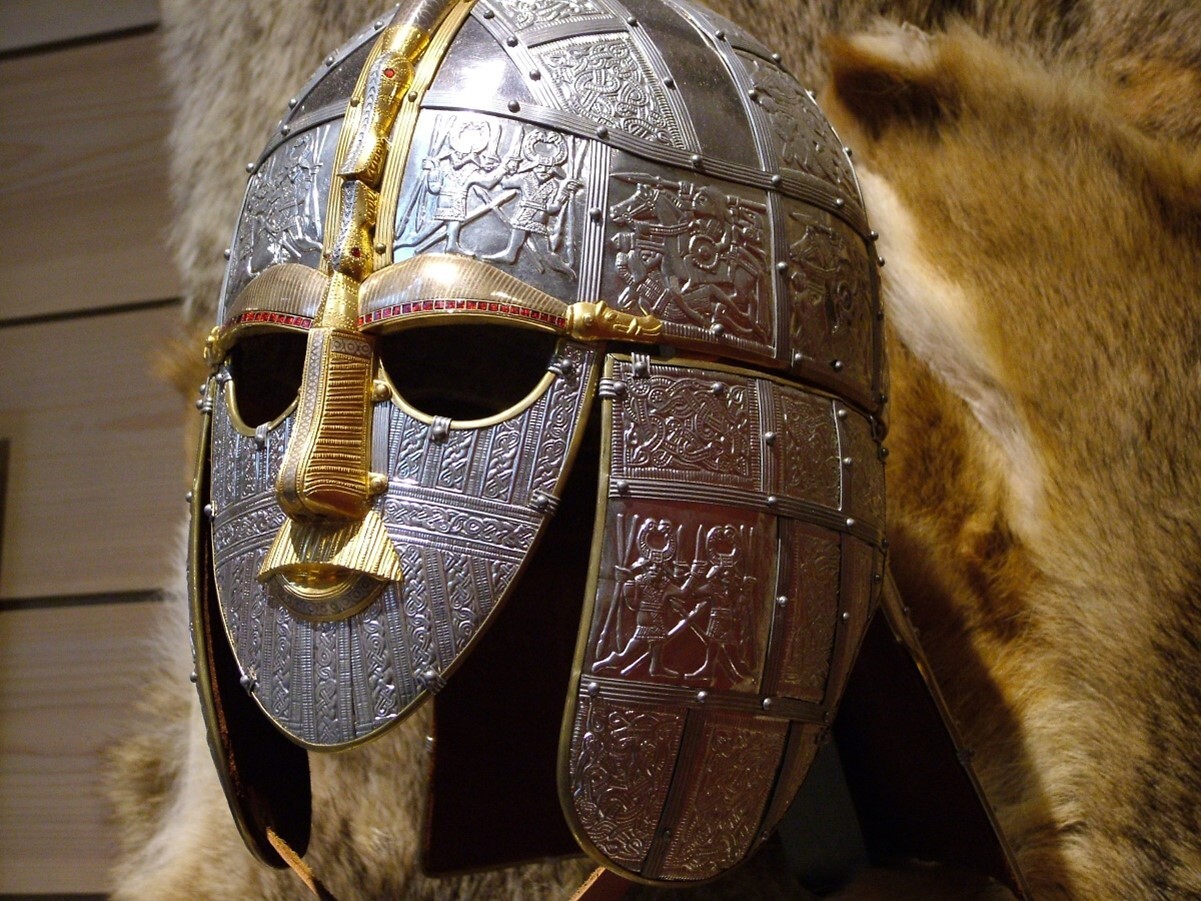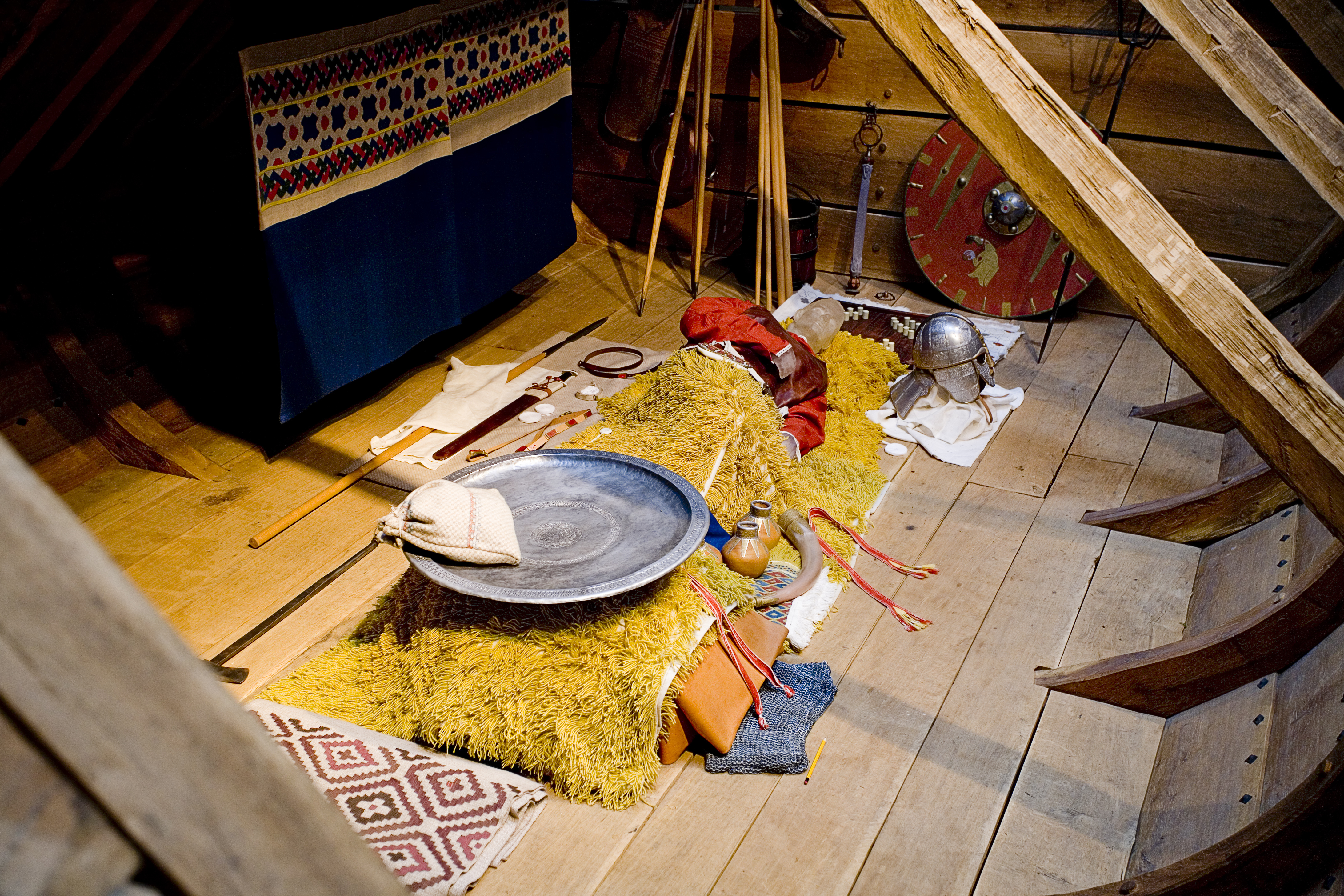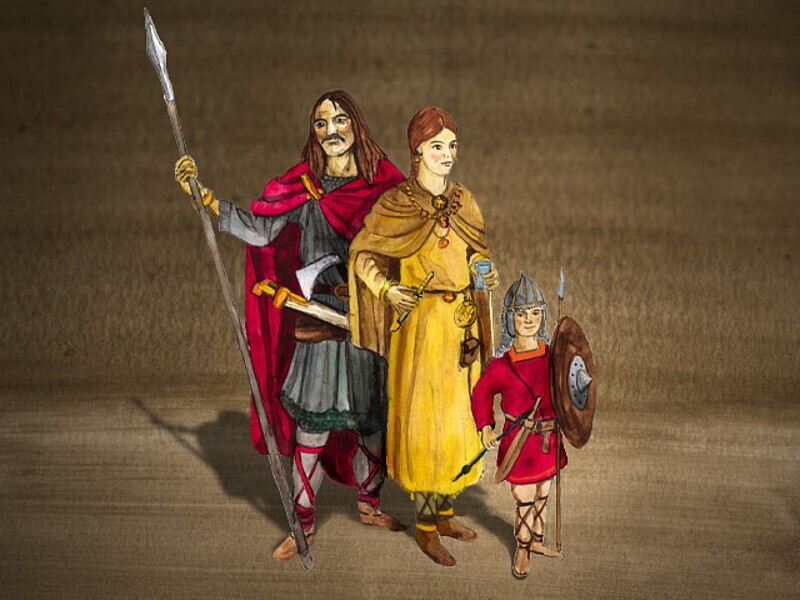Can we name a corpse? Identifying royalty in the burial record
A number of splendorous and wealthy ‘princely tombs’ from early medieval Europe have been identified with royal figures known from written sources. Can we really be sure who were buried in these tombs?
Whenever archaeologists dig up a lavish tomb, there is the inclination to connect it to a well-known historical figure. It makes for a nice story, of course, when we can put a name to an otherwise anonymous body. To the larger public – and even, I suspect, to many archaeologists – it is more interesting to visit or read about the grave of a famous historical figure, than just a collection of mute artefacts.
In this blog article, I will briefly consider three lavish tombs from early medieval northwestern Europe, all three of them speculated to have been the burial place of kings and queens known from historical records. Each of them represents some of the richest, most spectacular tombs found from fifth- to seventh- century Europe. How were they identified, and how secure can we be in putting a name to the corpse?
'Princely tombs'
In early medieval Europe, it was a common practice to bury (or cremate) a dead person with grave goods, such as jewels, weapons or ceramics. Traditionally, archaeologists see the wealth of a grave as an indication of the social status of the person that was buried. The more grave goods, and the higher the quality of the goods, the wealthier the grave. The wealthier the grave, the more important the deceased person must have been.
By this logic, a moderately wealthy grave, say with a nice sword and some silverware, belonged to a local nobleman. Whereas the richest graves belonged to society’s most powerful: kings, queens, princes and princesses. In archaeological jargon they are often called ‘princely tomb(s)’ (Dutch: vorstengraf).

A replica of the Sutton Hoo helmet. Source: Wikimedia
While this line of argument makes intuitive sense to our modern way of thinking, theorists have raised counter-arguments. First and foremost, since the dead do not bury themselves, the burial rite was performed by others, such as family, friends or neighbours. They chose what items to put into the grave. The objects they selected must have had symbolical meanings now difficult for us to reconstruct. Frans Theuws has suggested to see the grave as a ‘sacred fiction’, which tells us more about how a community wanted to remember and represent the deceased than providing us with an accurate biography.
Therefore, grave goods are not biographical objects, and funerary wealth does not necessarily have to relate to the dead person’s social status in life in a straightforward manner. The idea that access to silver and gold was the preserve of the privileged few is also a modern assumption without hard evidence. Suppose, for instance, that the entire community contributed to commemorate a special ancestor or respected neighbour. A (very) rich grave, then, is not necessarily always a royal tomb.
King Raedwald
The most famous ‘princely tomb’ from the early Middle Ages, presumably known to most readers of this blog, is the spectacular ship burial of Sutton Hoo, Mound I, from East Anglia in England. It is a truly breath-taking and monumental site. The deceased was placed in a chamber grave on a ship, furnished with 263 artefacts, including weapons, armour, vessels, gold and jeweled accessories, silverware, game pieces and a whetstone that some reckon was a sceptre. Finally, the ship was buried under a mound. Together, the site and assemblage recall the royal (ship) burials of Scandinavia and the epic world of warrior-kings as described by the equally famous Beowulf poem.

Reconstruction of the Sutton Hoo burial, inside the ship’s burial chamber. Source: Wikimedia.
The grave goods point to the early seventh century. In particular, the youngest coins in the grave date to approximately the 610s and 620s. This would match with the year of death of King Raedwald of East Anglia, a figure known from Bede’s Historiae Ecclesiastica and the Anglo Saxon Chronicles, in 624/625.
From Bede, we learn that Raedwald had been acquainted with Christianity, but did not fully commit to either his ancestor’s “pagan” faith nor the new Christian religion. The Sutton Hoo burial has often been regarded as a pagan burial with some Christian elements (notably two silver spoons bearing the names of “Paulus” and “Saulus”). However, this interpretation rests on the assumption that the ritual of furnishing a grave with grave goods was exclusively a “heathen” custom. This can now no longer be taken as self-evident, since more and more archaeological evidence suggests that early medieval burial practices did not neatly divide alongside pagan/Christian lines (see Femke Lippok’s article on this blog). A christian, too, might receive grave goods after death.
So, while Raedwald remains a likely candidate, it is impossible to verify this identification. The burial could have also held a lesser known relative of Raedwald, a neighbouring king, or perhaps even a non-royal individual.
King Childeric
The closest comparison to England’s Sutton Hoo on the continent is probably the splendid burial of the "Tournai male", identified as the Merovingian King Childeric (circa 440-481), father of the better-known Clovis. This tomb was found already in 1653, through sheer chance by a stonemason in the Belgian town of Tournai. The grave goods included a wealth of objects, such as weapons, a crossbow brooch, a crystal ball, a golden bull’s head, golden bees, garnet cloisonné and hundreds of coins. Later excavations revealed that he was probably buried under a mound and surrounded by horses’ graves.

Reconstruction of king Childeric, dressed in the finds from the Tournai tomb, including weaponry, shield, bracelet and brooch. Artists: P. Perrin and M. Kazanski.
The identification was made on the basis of a signet ring found in the grave, which bears the inscription CHILDERICI REGIS (‘of King Childeric’). Almost everyone automatically assumes that it must have belonged to Childeric. However, it is well-known that kings often handed out their seals to local officials or to administrators known as referendarii, who used the king’s seal to sign off documents in his name. What if that is the case here, and the ring was actually worn by one of Childeric’s local representatives?
The location of the burial more or less fits the historical narrative: it is commonly thought that the early Frankish kings had their power base in and around modern day Belgium, before Clovis expanded into most of (what is now) France from 486 onwards. However, in near-contemporary sources, we find Childeric active nowhere near Tournai. Instead, we find him mostly around the Seine and the Loire. He is temporarily exiled to ‘Thoringia’, which scholars debate must either be translated as Thuringia or Tongeren, but not Tournai.
Tournai is often said to have been Childeric’s capital city. Ironically, no evidence of this can be found in the sources, the theory is based solely on the presence of the "Childeric's" tomb. Even if the tomb was Childeric’s, it does not prove that his place of burial was also the capital seat of his kingdom. Theuws has suggested, for example, that Clovis deliberately buried his father Childeric far away from the royal centre at Paris.
Queen Wisigard
In Cologne, archaeologists found a woman’s and a boy’s grave under the cathedral. Again, both graves are extraordinarily rich. The young boy was, among other things, buried in a wooden cot with a child-sized helmet and adult-sized weapons, in addition to bronze, glass and wooden vessels and a small wooden ‘sceptre’. The woman was found with a vast amount of gold and jewelry, glass, clothes, an amulet box and a crystal ball. Both the wooden sceptre and the crystal ball are often interpreted as royal regalia. Unsurprisingly, the search for royal candidates soon started.
The wood that covered up the boy’s grave has been dated to about 537 (± 10 years). In addition, some of the woman’s grave goods have been interpreted as Langobardic. Therefore, it has been surmised that the woman must be Queen Wisigard with her son. Wisigard is known from the Histories by Gregory of Tours to have been a Langobard princess wed to the Merovingian King Theudebert I, somewhere in the 530s. Theudebert ruled over the eastern part of Merovingian Gaul, with the capital seat at Reims, whose kingdom indeed incorporated the town of Cologne.

Reconstruction of the Cologne woman and boy, depicted as a royal family with King Theudebert I. Source: ‘Frankenfamilie’, https://www.koelner-dom.de/dom...
However, again no written testimony survives of Theudebert or Wisigard in or around Cologne. While they may have visited the city, outside of our knowledge, what reason was there to bury the late queen in Cologne, rather than Reims?
Furthermore, there is no historical evidence for Wisigard having a child, she died shortly after her marriage to the king. Indeed, DNA-evidence from the bodily remains suggests that the woman and child were in fact not related. So, the convenient picture of a royal family tomb must probably be discarded.


As for the woman: coins in her grave point to a date after 518/526, the grave goods to about 525-550. She was about 25-30 years old when she died, which does fit with what we know of Wisigard’s premature death in 538. Nevertheless, a secure identification is impossible. Plenty of other important women who were not mentioned by our sparse historical record could have been buried here between 525 and 550. One suggestion is that the woman may have been a descendent of Sigibert the Lame, a rival king in Cologne assassinated at the behest of Clovis in 509.
Conclusion
Welding textual and archaeological evidence together provides us with compelling narratives. From silent graves we might perhaps reconstruct royal burials. The corpse, with its grave goods, becomes inspiration for a royal (family) portrait.
However, it is easy to forget that almost always such identifications are conjectures. I do not want to argue that we should totally reject any hypothetical identification of a body, but the sparse literary record leaves out many individuals who could have been buried in these so-called ‘princely graves’. Perhaps they were not even royals. While their identities remain shrouded in the mist of time, their sepulchres will forever inspire our imagination.
Further reading
Martin Carver, Sutton Hoo. Burial ground of kings? (London 1998).
Dimitri Phillips, 'A wealth of evidence: the identity of the man commemorated at Sutton Hoo', Elements 3.1 (2007) 67-75, available online.
Frans Theuws, 'Burial archaeology and the transformation of the Roman World in northern Gaul (4th to 6th Centuries), S. Brather-Walter ed., Archaeology, history and biosciences. Ergänzungsbände zum Reallexikon der Germanischen Altertumskunde 107 (Berlin/Boston 2019) 125-150.
Egon Wamers and Patrick Périn eds., Königinnen der Merowinger. Adelsgräber aus den Kirchen von Köln, Saint-Denis, Chelles und Frankfurt am Main (Regensburg 2013).
Joachim Werner, 'Frankish royal tombs in the cathedrals of Cologne and Saint-Denis', Antiquity 38 (1964) 201-216.
© Jip Barreveld and Leiden Medievalists Blog, 2022. Unauthorised use and/or duplication of this material without express and written permission from this site’s author and/or owner is strictly prohibited. Excerpts and links may be used, provided that full and clear credit is given to Jip Barreveld and Leiden Medievalists Blog with appropriate and specific direction to the original content.


